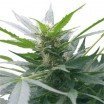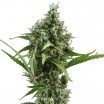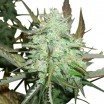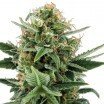Don't have an account?
Register NowYou have to add to cart at least 5 bottles or any program to make checkout.
- BlogThe Different Types Of Cannabis And Their Effects
The Different Types Of Cannabis And Their Effects
Published: December 1st, 2017
Categories:
Cannabis Info
DIFFERENT KINDS OF CANNABIS AND THEIR EFFECTS
Cannabis is one of the earliest crops cultivated by humans. Up until recent prohibition, which is a historical anomaly, cannabis was unremarked as a day to day commonality, but remarkable as a multi-purpose industrial and medicinal plant.
Prehistoric archaeological excavations show cannabis has had a long and illustrious relationship with humans. Evidence of cannabis use is found in medieval Germany where it was a respected medicine. In ancient China, the hanzi for man was the same as for cannabis - attesting to how revered the plant was for its adaptability and breadth of purpose. Cannabis has been a global phenomenon for so long that the clock must be wound back over twelve thousand years to find it in it's home on the steppes of Central Asia.
There is some contemporary debate as to whether there really are three distinguishable subspecies of cannabis or if the different phenotypes are simply climatic variations of the genus. Having been hybridized for over ten thousand years and with prohibition short-circuiting our complete knowledge, it will be future genetic testing that answers the question once and for all.
Right now it will be simpler to use the vernacular common to cannabis culture and describe cannabis as a plant with three physically distinguishable subspecies: sativa, indica and ruderalis.
SATIVA
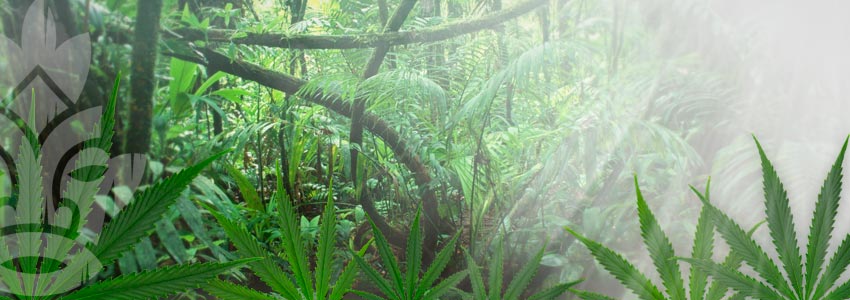
To find the best examples of cannabis sativa growing in its native climates, you would need to take a tropical adventure. Specimens of sativa thrive in the heat, high rainfall and long days of the tropical belt. Infamous sativas used to breed modern marijuana have their origins in the heat of Mexico and Colombia, the humidity of Thailand and India and the long days of central and northern Africa.
Aspect - The untopped sativa can grow extremely tall with some species easily reaching five metres in a single season. When vegetating in spring and summer there is a long distance between internodes which helps facilitate air movement. At the beginning of the flower cycle in autumn during differentiation, they can stretch to twice their vegetative height.
Leaf - Sativa leaves can grow to be bigger than a dinner plate with thirteen fingerlettes. Each fingerlette tends towards being long and thin with lots of shallow serrations along the leaf edge. Sativas, in general, have abundant leaves which thickly mulch the ground as the season comes to a close.
Flower - The tropical sativa is relatively photoperiod sensitive as there are minimal differences in summer and winter day lengths. They begin their long flowering when they have reached maturity set by internal genetic clocks. Generally, the flower structures are well spaced along long branches with extended spear like colas that turn up at the ends.
Sativas can vary widely. They can have very large and dense colas on the ends of branches only or single golf ball sized clusters distributed all over the plant. Sativa flowers display an obvious phi spiral in the inflorescence with the knuckles of buds alternately rotating up the branch into a point. The flowering season can be very long, sometimes stretching to fourteen weeks.
If plants were people a sativa would be the tall, skinny long distance runner.
INDICA

To observe an indica in its native habitat you would need to put on your hiking boots and wander the Himalayas from west to east, Karakoram to the Hindu Kush. These stout hardy plants are very cold and drought tolerant and enjoy lots of intense sunlight having evolved in the rarefied mountain air. Several notorious contemporary cannabis strains are the result of breeders crossing these types of indicas with tropical sativas in an effort to reduce flowering time without compromising quality.
Aspect - Untopped indicas tend towards minimal side branching and a long central cola. Early punishing mountainous winters and cold growth inhibiting springs leave little vegetation time so the indica plant is stout with a thick stalk and calloused buttressing at the closely spaced internodes. Branch nodes are symmetrical around the stalk alternating north, south then east, west as the plant grows. Rarely growing taller than three metres and often only reaching one and a half, the indica central cola dominates the view.
Leaf - Indica leaves are almost cartoon-like with their bulbous and deeply serrated leaflettes voluptuously overlapping each other. Each half of each leaflette has a convex curve that accentuates the turgor of the plant as it reaches for the sun.
Flower - As penguins huddle on ice floes to keep warm, indica flowers cluster tightly together as the chilly autumn descends. Being absolutely photo determinate the indica begins to differentiate and flower as the days shorten. Calyxes fit closely together around the stalks and branches rather than along flower spikes.
The central cola is the feature of the indica and often at half of the plants height can be an impressive sight at peak fluorescence. Branches although usually minimal are finished similarly with dense flower clusters that display heavy trichome development. The flowering season is short with some species finishing in seven weeks.
If indicas were people they would be the stout, muscled powerlifter.
RUDERALIS
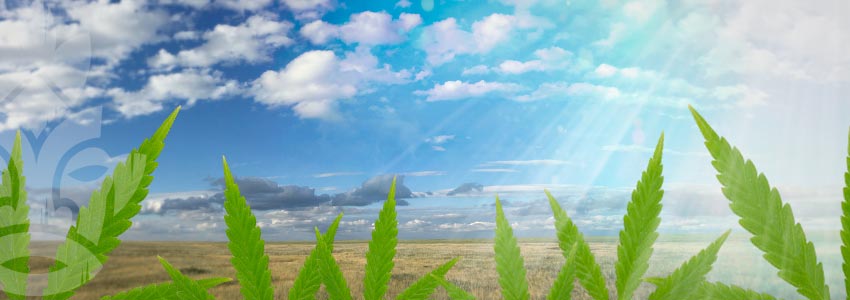
The strange cousin of the indica and sativa is the ruderalis. Initially classified in 1942 and inhabiting the steppes of Siberia the ruderalis strain is prized for the unique attribute of auto-flowering. With little to no psychotropic molecules produced by the strain contemporary interest lies in the plants ability to begin flowering after a specific vegetation time that does not rely on seasonal influences or day length. From the Latin "rudera", a ruderal species is one that is first to colonize cleared areas after competing plants are removed.
The plants short stature precludes it from being used as fibre hemp, but it has been used as an anti-depressant in Mongolian and Russian folk medicine for centuries.
Aspect - Ruderalis tend towards a squat bush that lacks the sun stretching enthusiasm of a sativa and the elegant symmetry of an indica. Siberia can be a cruel place so the plant grows as much as possible in every direction at once. Trying to make as many internodes for flowers as possible before the internal timer goes off and processes switch over to flower mode before Winter's freeze.
Leaf - The leaves of the ruderalis are obviously that of cannabis. The distinctive palmate shape composed of serrated leaflettes is a well-known silhouette that distinguishes the marijuana plant.
Flower - Ruderalis are not photo-determinate and will flower after a fixed vegetation time. With careful husbandry, the ruderalis plant produces buds indistinguishable from most contemporary marijuana only with one distinct difference. Ruderalis flowers are rich in cannabidiol (CBD) sometimes 20%, with a dearth of tetrahydrocannabinol (THC) making them ideal for cross breeding into medicinal marijuana. The flowering season is short finishing in seven to nine weeks.
If ruderalis were a human it would be the distant cousin Denisovan living in a cave.
SATIVA EFFECTS
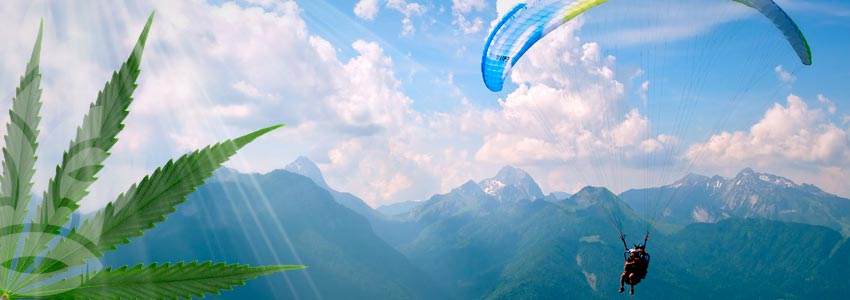
Sativa and sativa dominant hybrids contain terpenes that act in concert with cannabinoids to produce effects that are cerebral in nature. The "high" attributed to cannabis is the heady sensation compliments of sativa strains.
Prior to the rise of the indoor phenomena sativas were the most commonly used species of cannabis mainly because it was imported, smuggled and muled from tropical countries. Many a seventies and eighties American only knew cannabis from Mexico or Central and Sth America, the tropics, sativa country.
Recreationally - Typically cerebral in nature the effects of sativas still vary considerably from spacey and creative to hyper-focused. Situations appropriate for sativas better describe their recreational functionality. Blaze it for parties and conversation, surfing or paragliding, creative inspiration and artistic focus or heightening the theatre or theme park experience.
Therapeutically - The pleasant, organic cerebral sensations are ideal for tackling anxiety and problems with depression or easing the side-effects of withdrawal from harder drugs. Used as an appetite stimulant and mood elevator sativa strains have potential for the treatment of eating disorders and battling nausea from chemotherapy. As prohibition becomes more and more a historical oddity the wide range of psychological applications for the use of cannabis sativa will be unveiled with further legal studies.
INDICA EFFECTS
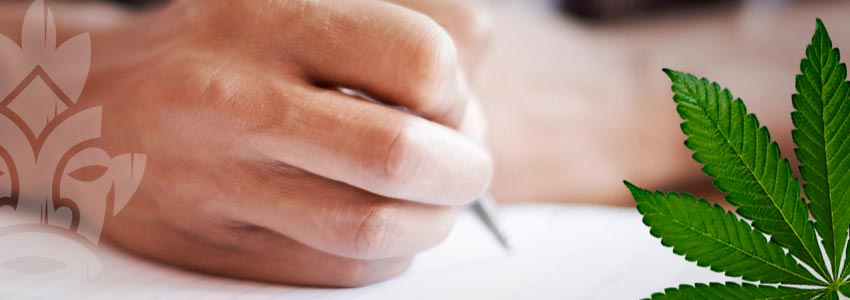
Couch-lock is a term unique to cannabis culture and is used ubiquitously when describing the effects of indica and indica dominant hybrid strains. Typically heavy flowers have an abundance of trichomes that bear resins and other essential oils that combine to add an analgesic physical sensation to the cannabis high. Described as body load, felt as an extra gravity of pressure or like having blood of quicksilver.
Indica plants have proven to be perfect for the indoor grower. The short grow season means a short breeding season. Some extreme examples of the thick indica flower type are being created by mad cannabis scientists every year.
Recreationally - Indicas are all about relaxation - chasing yourself down the rabbit hole on a two hour super focused writing spree. Falling asleep and dreaming fantastic dreams as you try to watch that movie, again. You know you have been there. Riffing deep with friends or freestyle rap marathons would be on an indica to do list. Indica flicks those kinds of switches.
Therapeutically - The anodyne physical effect is a desired characteristic for people seeking relief from arthritis and other osteo problems or fibromyalgia and migraine. The anti-nausea and appetite stimulating qualities of the indica strains bring a better quality of life for the terminally ill and those who struggle with chronic pain.
RUDERALIS EFFECTS
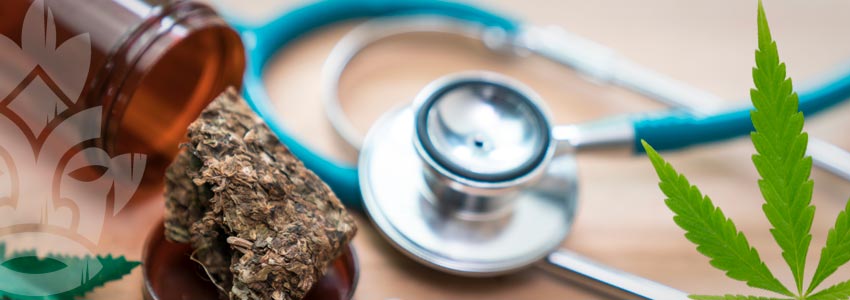
With little to no psychoactive compounds produced during the flowering period a different frame of reference is required for ruderalis. The cannabinoid CBD is quickly becoming a therapeutic superstar and is the predominant compound produced by ruderalis. This makes it an ideal plant for the production of high CBD cannabis hybrids that have the added quality of the therapeutic value of THC.
The other intrinsic value of ruderalis is in the breeding of auto-flowering cannabis hybrids. Skilled breeders can give powerful standard photoperiod plants the automatic flowering characteristic without compromising the individual recreational and medicinal strengths. These shorter maturing times are highly valued as two outdoor crops or an extra crop per year indoors can be accomplished.
THC & CBD CANNABINOID POWERHOUSES

The cannabinoid family of more than one hundred compounds along with many other complex molecules are produced in copious amounts by the cannabis plant during the weeks of maturing by the unfertilized flowers. Sinsemilla (seedless) cannabis continues producing resins in an effort to keep the flowers alive in the hope of pollination. These compounds are thought to act as part of the plants survival system in several ways including as an anti-desiccant, anti-fungal agent and insecticide.
The human endocannabinoid system has prolific receptors in the gut and brain. When cannabis is consumed both CBD and THC bind to neurotransmitters in the Basal Ganglia, Hippocampus and Cerebellum. CBD has therapeutic effect, but does not get you high. THC also has therapuetic effect and also gets you high. Interestingly CBD mitigates the effects of THC on the brain, where THC can cause drowsiness CBD causes alertness.
THC and CBD also bind to the CB1 and CB2 receptors distributed throughout the gut. Cannabinoids are important for gut motility, gastric secretion and regulation of food intake.
THC, CBD and the cannabinoid family as a whole have enormous therapeutic value. Studies conclude that these extremely valuable compounds have beneficial applications for human beings physiologically and psychologically.
THE EFFECTS OF THC
THC gets you high.
The cannabinoid delta 9 tetrahydrocannabinol or THC is the primary psychoactive ingredient in cannabis. The quantity of THC that a species has dictates the "strength" of the effects. Terpenes and flavonoids give the effects nuance and are why so many species can have their own distinctive highs or therapeutic applications.
THE EFFECTS OF CBD
CBD does not get you high.
CBD (cannabidiol) binds to the same receptors as THC but does not induce any psychotropic reaction. More often consumed as an extracted oil than smoked or vaporised, the value of CBD is entirely therapeutic. It has been shown to be potent and effective against a number of illnesses and disorders. CBD extracts are quite legal and can be mail ordered anywhere in the world.
EXCITING TIMES
The ridiculously antique notion of prohibition is slowly being erased in the western world. Without fear of prosecution scientists can now perform indepth clinical studies on cannabis and quantify the reasons for this plant being edified by human beings since the dawn of time.
A bright future lies ahead for cannabis as a remarkable medicine that is customizable, effective and non-addictive. The eventual and complete acceptance of recreational cannabis and recreational cannabis users will make generations of the future wonder what all the fuss was about.






